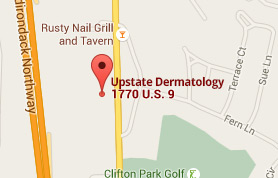Posted by Upstate Dermatology on Jun.03.17 in Skin Care
The PGA TOUR shares The Skin Cancer Foundation’s commitment to reaching men at risk with skin cancer prevention information. They debuted the awareness video below while being honored at the 2012 Skin Cancer Foundation Gala.
Skin Cancer and Golfers:
-
- 65% of melanoma cases are associated with exposure to ultraviolet (UV) radiation from the sun.1
- Men over age 40 have the highest annual exposure to UV radiation.2
- The majority of people diagnosed with melanoma are white men over age 50.3
- Melanoma is one of only three cancers with an increasing mortality rate for men
Prevention Guidelines for Golfers:
- Tee off at sunrise or in late afternoon — avoid the sun at its most intense (between 10 AM and 4 PM.
- Do Not Burn.
- Whenever you can, seek shade on the course — stand under a tree or sit in your cart.
- Wear a hat with a brim extending three inches or more all the way around, shading your face, neck, ears, and shoulder tops.
- Wear long-sleeved shirts and long pants, covering as much skin as possible.
- Wear wraparound sunglasses that block 99-100 percent of UV radiation, protecting the eye, eyelid, and surrounding areas.
- Remember to protect yourself on overcast days: Up to 80 percent of the sun’s UV radiation can penetrate clouds and harm your skin.
- Apply a generous amount of water-resistant, broad-spectrum (UVA/UVB) sunscreen with an SPF of 30 or higher to all exposed areas 30 minutes before heading outside to play golf. Look for a sports sunscreen formula that is designed to stay put if you sweat and won’t run into the eyes and sting. An SPF 30+ lip balm will help protect your lips.
- Carry sunscreen with you, and reapply every two hours, immediately after sweating heavily, or at the ninth hole. Look for a sunscreen with The Skin Cancer Foundation’s Seal of Recommendation. Don’t forget to apply sunscreen to frequently over- looked spots, such as the scalp (there are sunscreens designed specifically for this area), the backs of the hands and neck, and the ears.








